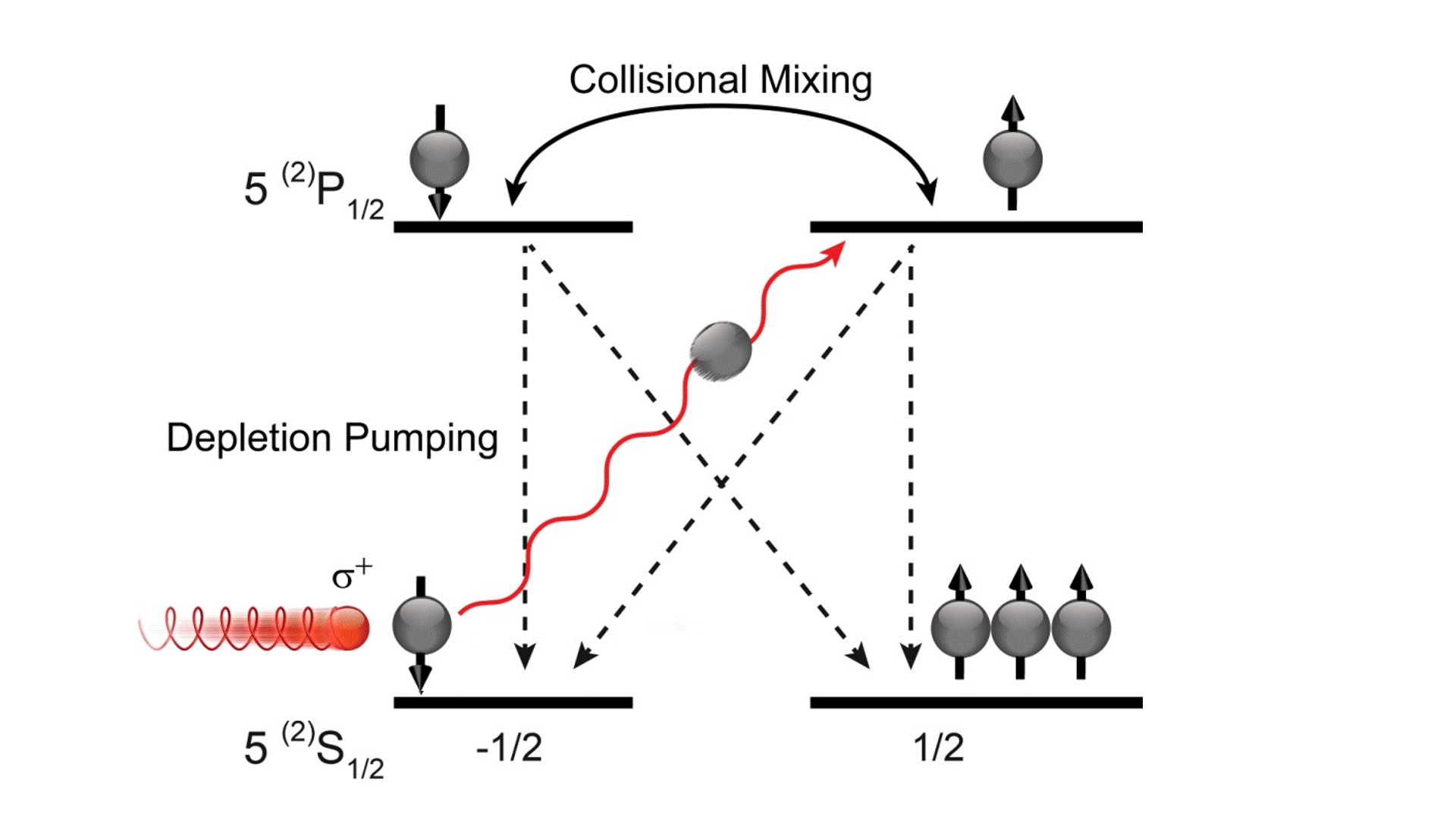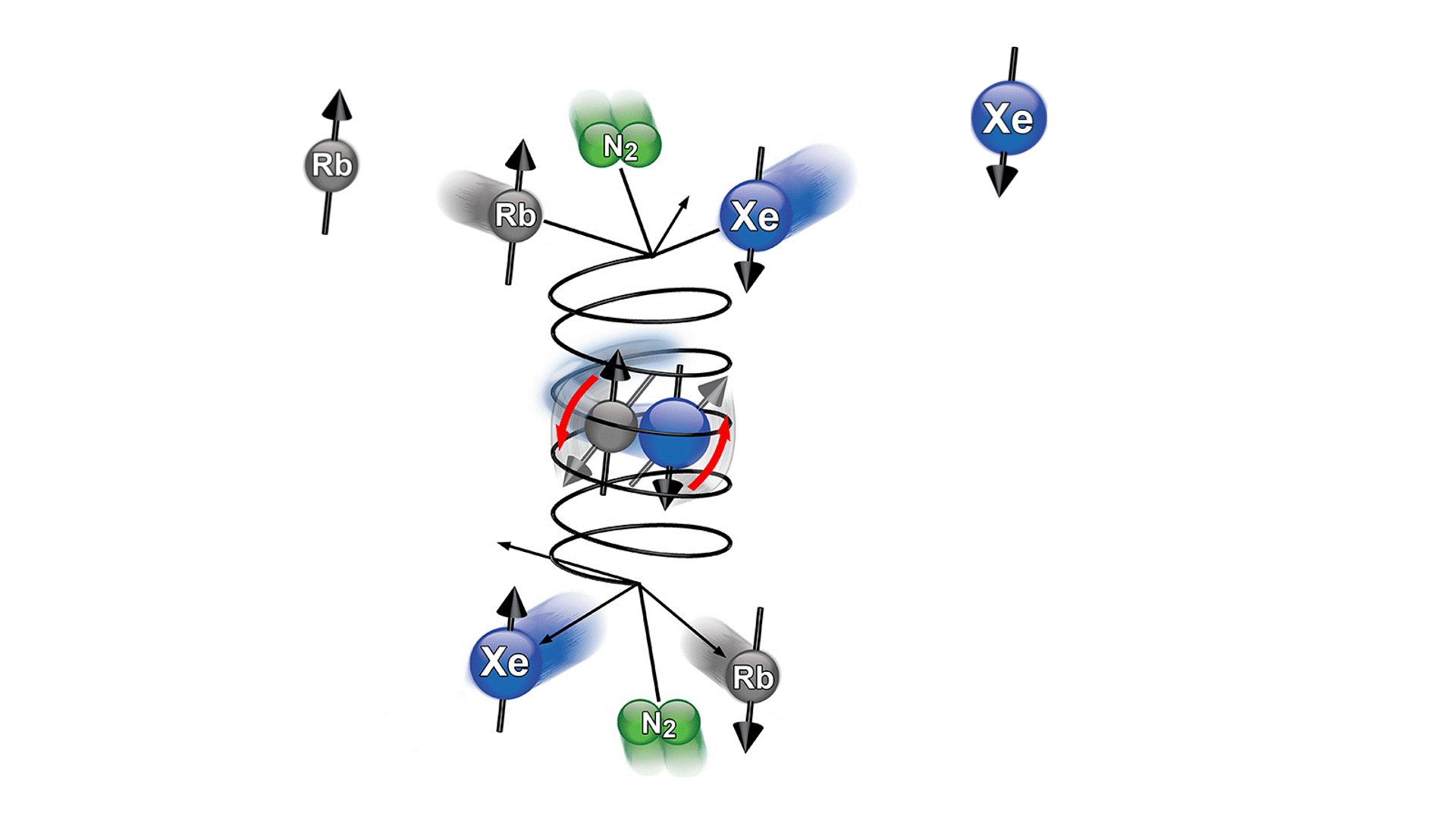XENON
Spin-Exchange Optical Pumping
The nuclear spins of xenon and other noble gases can be hyperpolarized (HP) to order unity by the process of spin-exchange optical pumping (SEOP). The two most common approaches to hyperpolarize Xe-129 via SEOP are termed continuous flow and stopped flow; (sometimes also referred to as “batch mode”) with respect to the delivery of Xe gas to and from the polarization cell.The batch-mode/stopped-flow systems are attractive not only because of their relative simplicity, but also because they can operate in a xenon-rich regime that obviates the need to separate the polarized Xe from the N2 (or He) via cryo-collection—eliminating a potential source of polarization loss as well as facilitating applications using quadrupolar noble gas isotopes. This production method has also been scaled up for automated production of clinically required quantities. SEOP is a two step process:
Step 1: Rubidium Polarization

Unpaired Rb electronic spins are polarized using the angular momentum of circularly polarized laser photons with Rb D1 absorption @ 794.75nm.
Selective depletion of the m = -1/2 occurs, followed by collisional mixing, and finally relaxation to m = 1/2. This Depletion Pumping rapidly reaches Steady State resulting in Electronically Spin Polarized Rubidium.
j
j

Step 2: Spin Exchange
In the next step, collisions between unpolarized Xe-129 gas and electronicically spin-polarized Rubidium occur. Spin Exchange occurs via Fermi-contact hyperfine interactions resulting in a high non-Boltzmann distribution of Xe-129 nuclearly spin states. These highly polarized Xe-129 spins increase the detection sensitivity of NMR and MRI by orders of magnitude.
Hyperpolarized Xenon Products
Automated Xenon hyperpolarizer Device
Robust Quality Assurance and Transportation Station of Hyperpolarized Sample
Service Contract Options and Preventative Maintenance





